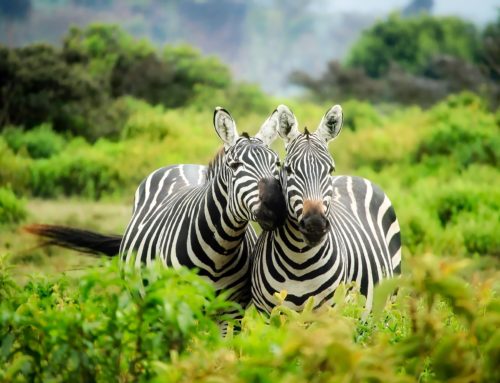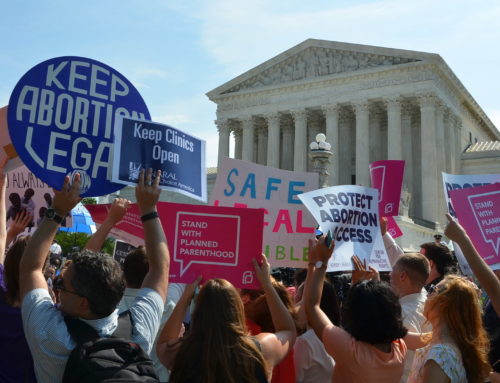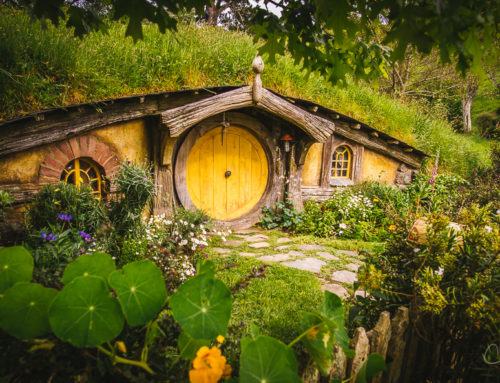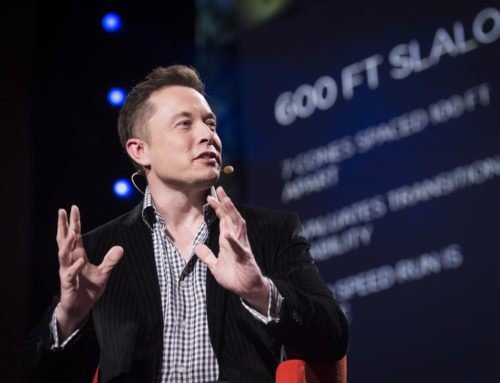By Craig Collins
Bright Green Lies (BGL) is a Trojan horse. Derrick Jensen, Lierre Keith, and Max Wilbert offer their readers a valuable critique of renewable energy in order to ambush the environmental movement. But before I say more about BGL, let me state my own values and biases. Like many Greens, I’m an eco-humanist. My deepest political and philosophical loyalty is to the long-range survival of our species. Unfortunately, humanism is still quite radical in a world where race, religion, nationality, wealth, and power remain the dominant concerns. I’m an ECO-humanist because our species will go from invasive to endangered if we allow malignant industrialism to continue trashing Mother Earth. This existential threat compels us to question every cultural contrivance that overrides our common biological identity.
Should our loyalties remain confined to our nation, class, culture, race, ideology, or religion? Or are we, first and foremost, members of one human family, struggling to raise our children, strengthen our communities, and coexist with the other inhabitants of Earth? Will blind patriotism and corporate power reduce us to carbon-addicted consumers fighting over the remains of a toxic planet? Or can we abolish this system that puts profit and power over people and the planet?
As a species, we have yet to achieve the wisdom, awareness, and agency necessary to abolish industrial capitalism. Our conflicting loyalties and immediate concerns keep us perilously unaware and ill-equipped to replace our profit-driven economy with a society that cares for people and the planet. Yet how we respond to ecocidal industrialism will determine whether humanity perishes with it or learns to thrive without it. These are the values and questions I bring to my assessment of Bright Green Lies (BGL).
Jensen, Keith, and Wilbert (JK&W) have marshaled their brainpower to fire a well-researched, but poorly aimed broadside at the environmental movement. Their research reveals the serious downsides of renewable energy by demonstrating how much of what passes for “green” is neither sustainable nor Earth-friendly. They do a thorough job of exposing the ways biomass, solar, wind, recycling, hydropower, energy efficiency, electric cars, eco-cities, mechanized agriculture, and geo-engineering are all ecologically damaging, fossil fuel dependent, and unable to sustain industrial civilization or protect the Earth. In short, Bright Green Lies debunks the notion that modern civilization can be “greened.” It obliges readers to face two vexing truths: industrialism is unsustainable and ecocidal—even if it embraces “renewable” energy.[1]
Many environmentalists find these truths hard to swallow for varying reasons. Of course, those with economic ties to solar, wind, and other alternative energy technologies adamantly reject them. Then there’s politics. To win public support and counter fossil fuel industry propaganda, influential Green groups often exaggerate renewable energy’s potential and ignore its drawbacks. Unfortunately, this strategy leaves many sincere environmentalists unaware that powering global civilization on renewables has drastic downsides. Of course, this ignorance prompts denial by fostering the fantasy that somehow green technology can rescue civilization AND save the planet.
Unfortunately, the authors bundle profit, politics, ignorance, and denial into one big “Bright Green” target. Anyone who supports renewable energy is a Bright Green traitor to Mother Nature. JK&W’s broadside even blasts the thousands of dedicated Earth defenders who realize green energy’s drawbacks but consider small-scale, community-operated renewables necessary to transition toward an Earth-friendly society.[2] The authors insist that even these committed eco-activists are Bright Green liars because “not one bright green technology helps the planet. All of them destroy what’s left of the living.”[3] Thus, “one could easily be forgiven for concluding that much environmentalism has become a de facto lobbying arm of the solar industry.”[4]
Jensen, Keith & Wilbert are not eco-humanists. Our survival is not their priority. They embrace a Deep Green perspective called ecocentrism or biocentrism.[5] Derrick Jensen declares that he fights, not for human survival, but to defend the living planet and nonhuman life by any means necessary.[6] His co-authors agree: “Ultimately this book is about values. We value something different than do bright greens. And our loyalty is to something different. We are fighting for the living planet.”[7]
The authors use their critique of green energy to spin a deceptive Deep Green narrative of their own. If you didn’t know better, this book would lead you to believe that there are just two types of environmentalism battling for the soul of the movement: the heroic Deep Green “Earth savers” and the nefarious Bright Green “civilization savers.” According to JK&W, most environmentalists have turned their backs on the movement’s fundamental mission—saving the Earth. They’ve been seduced by false Bright Green prophets who’ve conned them into believing that both industrial civilization and the planet can be saved with green energy and ethical consumerism.
According to JK&W, Bright Greens are heretics. Civilization is the enemy because any society with agriculture and cities is “at war against the living world.”[8] The only alternative is a return to the fundamentalist crusade of defending Mother Earth “by any means necessary.”[9] Their goal is to denounce these false Bright Green prophets and reclaim Deep Green leadership over the movement by convincing readers that if you want to save the Earth—cities, civilizations, and renewables must go.[10] The book makes no mention of an eco-humanist alternative to Deep and Bright Greens.[11] Eco-humanists are simply dubbed Bright Green because they fight industrialism for humanity’s sake and support some forms of renewable energy to downscale civilization.
For Deep Green fundamentalists there can be no compromise, no middle ground between Deep and Bright Green. JK&W contend “even with steep reductions in our energy-intensive lifestyle, a return to subsistence living, and the best-known permaculture techniques, a city cannot be made sustainable.”[12] They reason that since “cities have existed for less than 5 percent of our time on this planet…Obviously we don’t need cities.”[13] Reality check! Obviously our foraging ancestors had no use for cities on a sparsely populated, biologically rich planet. But do the authors seriously believe our ecologically damaged and depleted planet can support 7.8 billion post-industrial hunter-gatherers?
For those who care about future generations, this is a huge problem. But JK&W devote minimal attention to our population/consumption predicament. After assuring readers that their zealous ecocentrism “doesn’t mean killing all humans,” they declare: “Overconsumption and overpopulation must be addressed through bold and serious measures.” Without evidence they claim, “more than 50 percent of children born are unplanned or unwanted.” Therefore, “the most effective strategy” is free access to birth control, “absolute reproductive freedom and full political, economic, and sexual liberty” for women.[14] The authors don’t seem to realize this strategy is just another Bright Green illusion. It may reduce family size if women gain freedom and move out of poverty, but their smaller middle class families will become much bigger consumers.
At times, BGL’s animosity toward civilization, cities, agriculture, and green energy morphs into anti-humanism.[15] The book devotes several pages to cleverly equating the entire human species with “terrifying occupiers” like Nazis, imperialists, capitalists, and alien space invaders.[16] At one point BGL comments, “It’s not surprising that so many people believe humans are inherently destructive.”[17] Note the language used here. Throughout BGL, the authors employ phrases like “it’s not surprising that so many people believe” and “one could easily be forgiven for concluding.” These phrases allow them to peddle their dubious beliefs without having to defend them. Donald Trump is fond of making similar declarations like “everybody knows” this or that to both inflate and avoid responsibility for his wacky opinions.[18]
JK&W avoid confronting eco-humanism by ignoring it. Though you wouldn’t know it by reading Bright Green Lies, there are thousands of eco-warriors and hundreds of groups who are neither Bright nor Deep Greens. All you have to do is read the handmade posters at any pipeline blockade, climate action, or environmental justice struggle to see that most people are fighting for their lives and our future. They revere and defend the Earth but they’re against ecocidal industrialism primarily for humanity’s sake.
Militant eco-humanism provides a powerful, practical option to Deep Green fundamentalism and Bright Green backsliding. My guess is the authors know this, so they’d prefer to tuck eco-humanists into their Bright Green target to avoid dealing with their perspective. This simplistic Deep or Bright Green narrative can only succeed by convincing readers that anyone trying to save humanity is a civilization-saving Bright Green.
Instead of zeroing in on genuine Bright Green “civilization savers” like Al Gore, Lester Brown, and Jeremy Rifkin, BGL misdirects its broadside at alleged Earth traitors like Greenpeace and 350.org.[19] Their crime? Thinking renewable energy, for all its drawbacks, is needed to begin downscaling and de-industrializing society. JK&W accuse respected Earth defenders like Naomi Klein and Bill McKibben of providing “intellectual support for human supremacism and the conquest of the Earth.”[20] Why? Because they are more directed at taking down industrialism for people rather than polar bears.[21]
I mention polar bears for a reason. Throughout BGL the authors use a comment about polar bears by Naomi Klein to brand her a Bright Green apostate. What blasphemous comment did Naomi make that rankled JK&W so much they felt compelled to scorn it relentlessly? “I’ve been to more climate rallies than I can count, but the polar bears? They still don’t do it for me. I wish them well, but if there’s one thing I’ve learned, it’s that stopping climate change isn’t really about them, it’s about us.”[22] JK&W admit that “throughout this book, we’ve repeated Naomi Klein’s comments about polar bears not doing it for her. Not to be snarky, but instead because that’s the single most important passage in this book.”[23]
The authors’ “unsnarky” jibes target Naomi’s comment as “most important” because they think it epitomizes Bright Green civilization-saving. They insist that, by emphasizing “us” over polar bears, she’s putting civilization over the planet. I call BS. Clearly, when Naomi says “it’s about us” she means the generations of people whose lives are imperiled by climate chaos and ecocide. As she explains in This Changes Everything, “Climate change has become an existential crisis for the human species…the bottom line is what matters here: our economic system and our planetary system are now at war. Or, more accurately, our economy is at war with many forms of life on Earth, including human life.”[24] Yet, according to BGL, Klein and all her eco-humanist allies are just Bright Green “civilization savers” because for them “It’s less about nature, and more about us.”[25]
In a deceptive twist of logic, JK&W quote extensively and with great admiration the Haudenosaunee (Iroquois) Constitution. They seem to believe it espouses their Earth-first perspective. Not so. It clearly prioritizes human survival by warning decision-makers: “In all your deliberations…self interest shall be cast into oblivion…Look and listen for the welfare of the whole people and have always in view not only the present but also the coming generations, even those whose faces are yet beneath the surface of the ground—the unborn of the future Nation.”[26]
JK&W want to believe the Iroquois share their fervent Deep Green fundamentalism. But, like Klein and the other eco-warriors the authors label human supremacists, the Haudenosaunee are clearly expressing a vision that prioritizes their enduring welfare by caring for their habitat. Is this human supremacism? JK&W can offer no examples of any human culture, or any species for that matter, that puts nature over its own survival. But, instead of defending our future on a healthy planet, JK&W encourage readers to: “Find something you love and defend it. A stream, a stand of trees, a struggling songbird: They need our protection and care.”[27]
JK&W are right to criticize Greens who downplay the inherent drawbacks and damages that would plague any “green growth” effort to scale up renewables to power extractive industrialism. The book’s strength is underlining how important it is to re-examine, rethink, and remain critical of programs and policies that ultimately cannot protect people and the planet despite their shiny green wrapping. Many Greens, Naomi Klein included, are still unable to fully accept that—to avoid an imperiled future on a ravaged planet—society must radically downsize and de-grow.[28]
The tension between “green growth” and de-growth is playing out within the Green New Deal coalition. But Greens should avoid falling out over this until they gain enough power to isolate and unseat the anti-environmental extremists who dominate the system. Replacing fossil-fueled capitalism with a more equitable economy powered by alternative energy would constitute a major transitional step toward a smaller, simpler, mutually beneficial relationship between our species and Mother Earth.
Deep Greens like JK&W are a tiny fraction of the environmental movement and a micro-sliver of the population. They are completely outnumbered by the activists fighting industrialism to defend our future on this precious planet. Eco-humanists empathize with all life and are horrified by the escalating extinction holocaust. But they know industrialism may render the Earth uninhabitable for people long before it turns lifeless. With or without our help, Gaia will recover from climate chaos, habitat destruction, radioactive waste, mountaintop removal, toxic pollution, ocean acidification, and plummeting biodiversity. But unless we bury industrialism, human beings may not.
Bright Green Lies seems intent on splitting the movement between polar bear and people protectors even though JK&W admit “we need massive movements to relentlessly impede the functioning of industrial civilization.” They insist that these massive movements must “start by rejecting false solutions” and “coalesce around goals that will save the planet.”[29] But how can any coalition become massive if it excludes everyone who refuses to prioritize nonhuman life over our species’ survival?
This book was designed to divide rather than build a movement. It wrote off and ridiculed anyone engaged in fighting industrialism for humanity’s sake. Instead of encouraging massive resistance to industrialism, JK&W seemed bent on converting naïve environmentalists to Deep Green fundamentalism by spinning a narrative that ignored eco-humanism and blasted everyone who puts people over polar bears as Bright Green “human supremacists.” This amounts to strategic suicide for people and the planet.
Other articles by this author can be found at this website:
Catabolic Capitalism vs. Green Resistance:
https://www.catabolic-capitalism.com/
Craig Collins, Ph.D. is the author of Toxic Loopholes (Cambridge University Press), which examines America’s dysfunctional system of environmental protection and the international system’s failure to confront climate chaos. He teaches political science and environmental law at California State University East Bay and was a founding member of the Green Party of California. His forthcoming books: Being Human: The Rise & Fall of Earth’s Most Invasive Species and Rising From the Ruins: Catabolic Capitalism & Green Resistance reformulate Marx’s theory of history & social change and examine the emerging struggle to replace catabolic capitalism with a thriving, just, ecologically resilient society.
Image: Old-growth forest, photo by Patte David, USFWS on Pixnio
[1] BGL is not the first or best treatment of this subject. See: Trainer, Ted. (Alexander & Rutherford eds.)The Simpler Way: Collected Writings of Ted Trainer. (Simplicity Institute, 2020); Heinberg, Richard & David Fridley. Our Renewable Future. (Island Press, 2016).
[2] BGL, 152-3.
[3] BGL, p.435-6.
[4] BGL, p.30.
[5] Curry, Patrick. “Dark Green or Deep (Ecocentric) Ethics,” Ecocentrism Homepage: http://www.ecospherics.net/pages/curryh4.htm
[6] BGL, pgs. 26, 472-73.
[7] BGL, p. 265. Also pg. 360.
[8] BGL, pgs. 3-7; 433.
[9] BGL, pgs. 26, 472-73.
[10] BGL. p. 22
[11] BGL begins with a strange chart—a weirdly warped “Spectrum of Environmentalism.” The spectrum includes six kinds of environmentalism. There are “Deep Green” Earth-firsters like the authors and their “Bright Green” rivals who promote ethical consumerism and green industrialism. These are the only 2 types ever mentioned in the rest of the book. But the chart also includes “Lifestylists” living off the industrial grid but avoiding any struggle to change it and “Wise Use Environmental Managers” who favor regulating pollution & resources. The spectrum even includes “Cornucopians” who think resources are infinite and “Technocratic Transhumanists” who want to transcend biology and leave planet Earth behind! The authors never explain why these two groups remotely qualify as environmentalists. Stranger still, the spectrum omits eco-humanists even though thousands of environmentalists oppose ecocidal industrialism primarily for humanity’s sake.
[12] BGL. p. 334.
[13] BGL. p. 363.
[14] BGL. pgs. 433, 446.
[15] BGL. pgs. 22-28, 296, 361,
[16] BGL, pgs. 33-35.
[17] BGL. p. 296.
[18] Bump, Philip. “All of the Things That ‘Everybody Knows’ According to Trump,” Washington Post (April 10, 2019): https://www.washingtonpost.com/politics/2019/04/10/all-things-that-everybody-knows-according-trump/
[19] BGL. p. 464-68.
[20] BGL, p. 464.
[21] On pg. 248 BGL briefly mentions this anti-growth perspective only to write it off as a “fringe idea.”
[22] Bright Green Lies (BGL), p. 24.
[23] BGL. p. 465.
[24] Klein, Naomi. This Changes Everything: Capitalism vs. The Climate (Simon & Schuster, 2014): 15-21.
[25] BGL. p. xxi.
[26] Quoted in BGL, p. 319.
[27] BGL. Pg. 456.
[28] Collins, Craig. “Overlooking the Obvious with Naomi Klein,” CounterPunch (Oct. 17, 2014): https://www.counterpunch.org/2014/10/17/overlooking-the-obvious-with-naomi-klein/
[29] BGL. p. 358.










But the chart also includes “Lifestylists” living off the industrial grid but avoiding any struggle to change Pink Palm Puff Hoodie